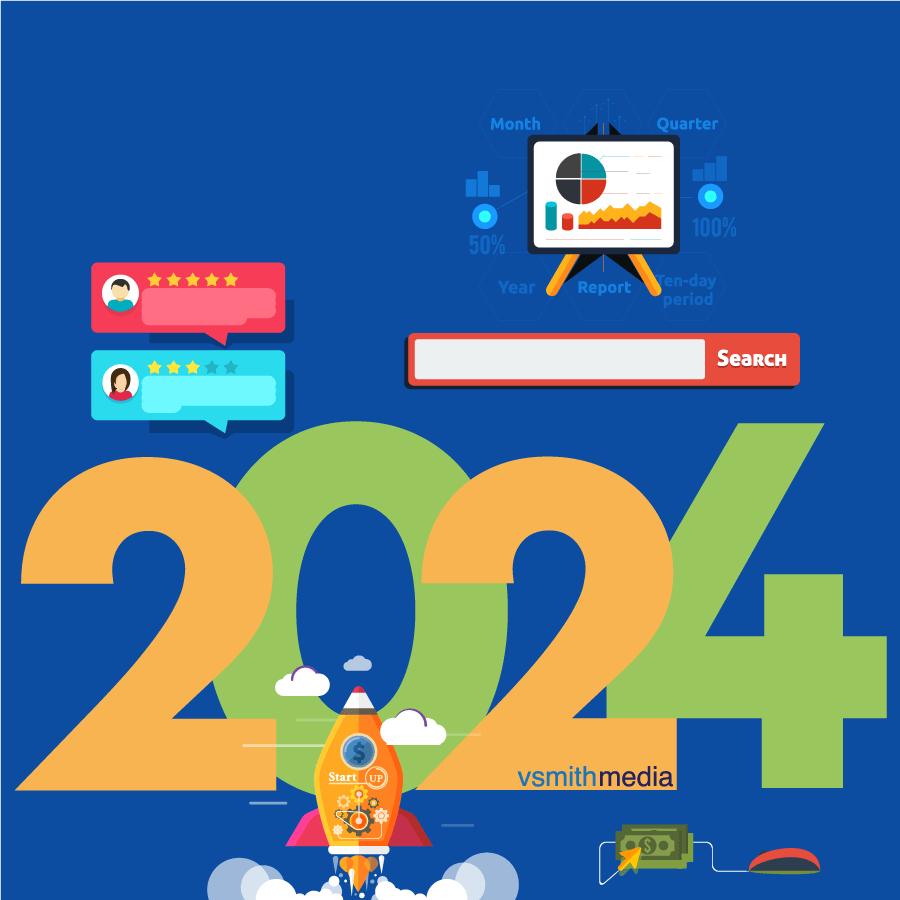Digital Marketing Trends to Consider in 2024
Digital marketing is the use of digital channels to promote or market products or services to consumers and businesses. It encompasses a wide range of activities, including search engine optimization (SEO), social media marketing, content marketing, email marketing, and pay-per-click (PPC) advertising.
Digital marketing is becoming increasingly important as more and more people spend time online. In fact, a recent study found that over 90% of adults in the United States use the internet. This means that digital marketing is a great way to reach a large and targeted audience.
The digital marketing landscape is ever-evolving, driven by technological advancements and changing consumer behavior. As we step into 2024, it’s crucial for businesses to stay ahead of the curve and adapt to new trends. In this blog post, we will delve into some of the key digital marketing trends that are expected to shape the industry in 2024.
The digital landscape is in a perpetual state of flux, driven by technological advancements and changing consumer behaviors.
Staying informed about cutting-edge strategies can provide businesses with a competitive edge and the ability to connect with their target audience in meaningful ways.
Businesses that want to stay ahead of the curve must be aware of the current digital marketing trends in the scene.

Most important digital marketing trends
- Rise of Hyper-Personalization: As digital marketing matures, personalization takes a quantum leap. Hyper-personalization leverages AI to analyze vast amounts of user data and create tailored experiences that resonate with individuals on a deeply personal level. Brands are transitioning from generic segmentation to understanding the nuances of individual preferences. Hyper-personalization is not just a buzzword; it’s a necessity in today’s competitive market. Businesses are increasingly leveraging advanced analytics, AI, and machine learning to deliver individualized content, product suggestions, and offers to consumers. This level of personalization enhances customer engagement and increases the likelihood of conversion. Hyper-personalization involves using advanced analytics, AI, and machine learning to deliver highly individualized content and offers to consumers.
- Predictive analytics, driven by artificial intelligence, has revolutionized how marketers anticipate customer needs. Machine learning algorithms analyze historical data to predict future behaviors, enabling marketers to proactively tailor their campaigns. AI-Driven Marketing Analytics Artificial Intelligence (AI) is revolutionizing the way marketers analyze data. AI algorithms can sift through massive datasets to provide actionable insights, helping businesses make informed decisions. From customer segmentation to predictive analytics, AI-driven marketing analytics offer a plethora of opportunities for marketers to optimize their strategies.
- Evolving Search Strategies: Voice and Visual Search Optimization. Voice Search Optimization (VSO), Voice search is no longer a novelty; it’s a growing trend. With the increasing popularity of voice-enabled devices like smart speakers and virtual assistants, optimizing your content for voice search is imperative. Voice Search Optimization (VSO) focuses on long-tail keywords and natural language queries to improve visibility in voice search results.
- Conversational Marketing with Chatbots: Chatbots are becoming an integral part of digital marketing strategies. They offer real-time, personalized customer service, answering queries and solving problems. With advancements in AI and natural language processing, chatbots are becoming more sophisticated and capable of handling complex interactions.
- Interactive Email Content: Static emails are giving way to interactive content. Incorporating quizzes, polls, and clickable elements makes emails more engaging and encourages user participation.
- First Party Data Is the New Standard: Marketers are prioritizing first-party data in their strategies due to stricter privacy regulations, the decline of third-party cookies, and increased customer trust and privacy concerns. First-party data offers greater accuracy, reliability, and compliance, allowing marketers to personalize campaigns, improve customer experiences, and build long-term relationships directly with their audience. This shift helps navigate the evolving privacy landscape while delivering more effective and targeted marketing efforts.
- Increased Focus on Brand Purpose and Social Responsibility: Consumers are placing greater importance on brands’ values, social responsibility, and purpose. Advertisers will emphasize authentic storytelling, highlighting their commitment to social causes and sustainability, as consumers seek out brands that align with their values.
Before you decide what services, products and goals are in store for you. Let me run a FREE Digital Footprint Snapshot Report and tell you how your business’ online presence stands in market.
A full report takes 24-hours to process and it will give you a full perspective of your brand.




